Thonet’s limited-edition chair by Studio Besau Marguerre celebrates 100 years of Bauhaus

For the 100th anniversary of Bauhaus, Thonet and Hamburg-based design studio, Besau Marguerre have teamed up to bring an element of contemporary luxury to the S 533 F chair designed by Mies van der Rohe in 1927. The limited-edition of the renowned steel framed cantilever chair has been given a new look with a grey and rose colour scheme, bringing a sensual sheen to the brusque Bauhaus chair.
Studio Besau Marguerre, founded by Marcel Besau and Eva Marguerre in 2011, has created two new versions of the S 533 F with added armrests lending a softer appearence and feel. Looking to find a contrast between ‘objectivity and softness’, one chair has a pearl gloss chrome frame and anthracite-coloured nubuck-effect bend leather, with the other in matt champagne chrome with nubuck leather in soft rose.
‘I think they’re very good at putting together materials and colours, creating something out of very little, and giving enhancement that doesn't betray the design, but keeps validity,’ says Norbert Ruf, creative director at Thonet. ‘It’s a very fresh look on the Bauhaus classic. It pushes a little bit of luxury, but doesn’t go over the edge,’ he says.

Detail of the limited-edition chair. Image courtesy of Thonet
The designers referenced the original design through the warm, yet neutral colours that reference the lighter nickel-plated patina of the first cantilever chairs from the 1920s and 1930s. ‘While most designs from the 1920s were rather simple and function, this chair clearly reveals the architect’s signature: here, Mies combines functionality and comfort with timeless aesthetics – and that’s precisely what we wanted to bring into the present,’ says Marcel Besau.
Softness and flexibility were integral to Mies van der Rohe’s design that was specifically shaped to adapt and cushion the movement of the user with its large arch of hardened tubular spring steel. The designers have enhanced the user experience of this Bauhaus classic, by applying their knowledge and signanature sensual approach to design that can be felt across their other projects such as the furniture series for the Elbphilharmonie in Hamburg.
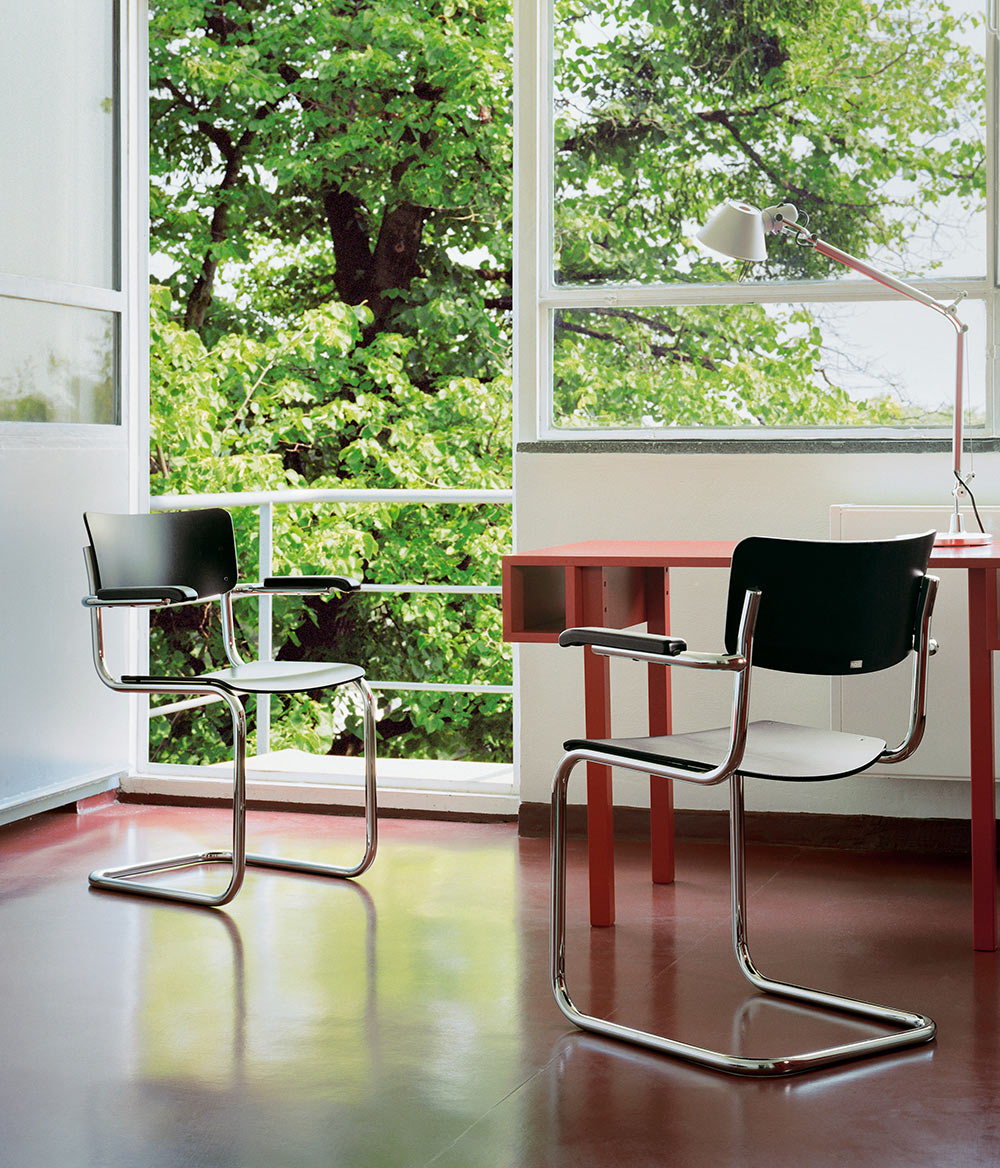
The S43 chair as seen in the Bauhaus studio building in Dessau. Image courtesy of Thonet
Studio Besau Marguerre were recommended to Thonet through German designer Stefan Diez, whom Eva Marguerre studied under. (‘I usually ask people who I believe have a good feeling for other people,’ says Ruf of his selection process for collaborators). Ruf remembers being impressed by ‘a small colourful stool that was dipped into resin’ designed by Marguerre early on in her career.
With backgrounds in product design as well as exhibition and graphic design, Besau and Marguerre are based in the district of Eimsbüttel in Hamburg, a place where – like the Bauhaus – there is a community of designers working together and collaborating

A Thonet catalogue from 1930-31 featuring the tubular steel designs. Image courtesy of Thonet
Thonet’s history is based upon collaboration and craftsmanship too – the manufacturer opened its workshop in Boppard on the River Rhine in 1819, first mastering the art of the chair no.14, the Vienna Coffee House chair, and pioneering the technique of bending solid beech wood. The next challenge would be the tubular steel furniture, designed by the Bauhaus architects Mart Stam, Ludwig Mies van der Rohe and Marcel Breuer in the 1930s. By this time, always in chase of innovation, Thonet had grown from workshop into its vast headquarters and production site in Frankenburg, Germany. Today, working on collaborations with designers to bring limited-editions to the market is an expression of this continued experimentation and innovation, mixing contemporary expression with years of expertise and skill.
‘It's been a very positive and constructive collaboration,’ says Ruf of the Studio Besau Marguerre edition. ‘The first collaborations with designers and interior architects are always the most difficult because there’s a lot of trial and error, trying to find a similar language, and to communicate what Thonet is and needs, what’s credible for our market, and also to understand how to find a compromise – after all that, it’s then a lot easier to build on the know-how for another collaboration.’

One chair has pearl gloss chrome frame and anthracite-coloured nubuck-effect bend leather, with the other in matt champagne chrome with nubuck leather in soft rose
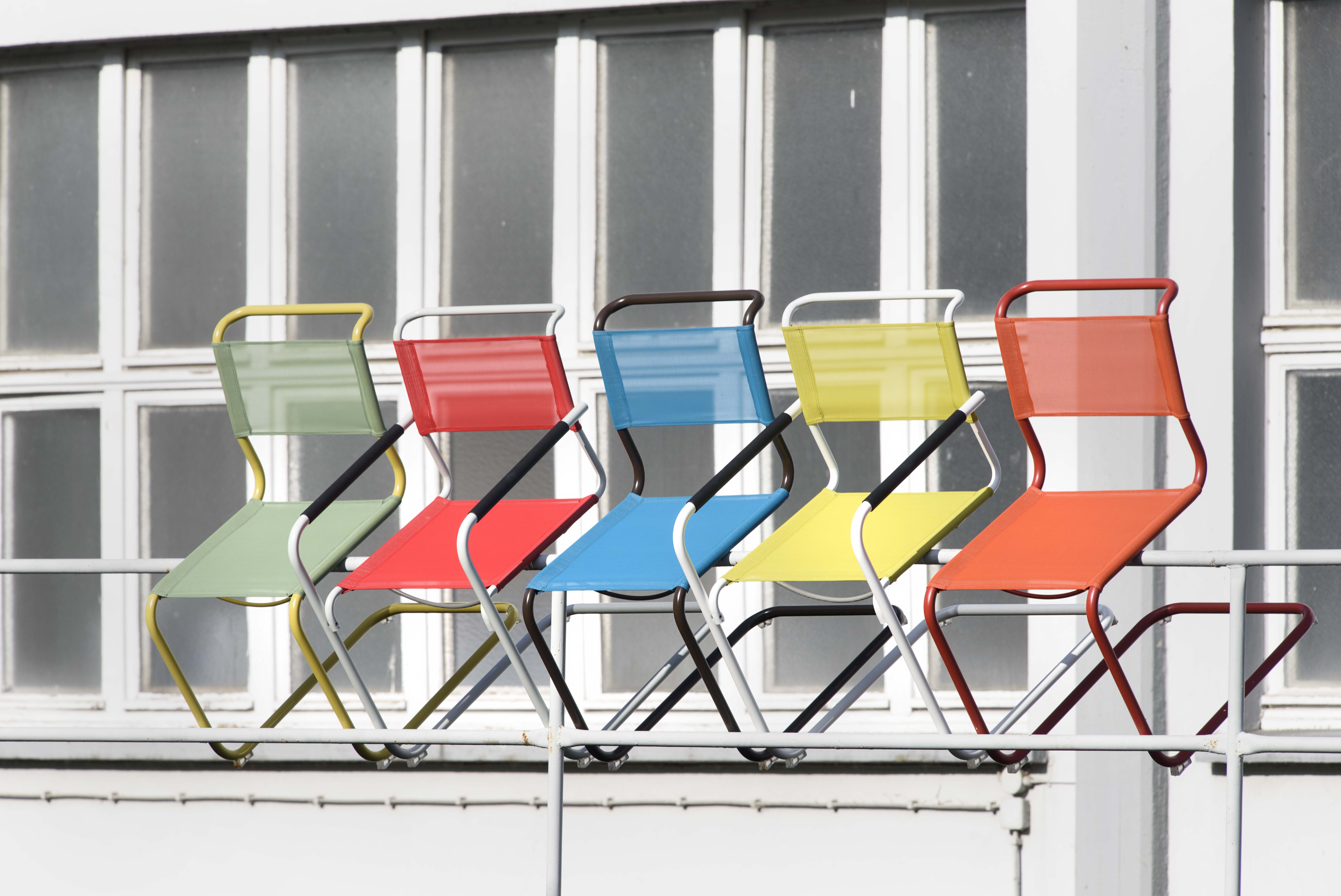
The classics in colour series, also launched this year with a selection of lacquered colours including tomato red, white, black, chocolate brown, warm grey, grey-green and mustard yellow inspired by Bauhaus colour theory and Johannes Itten’s colour circle as orientation
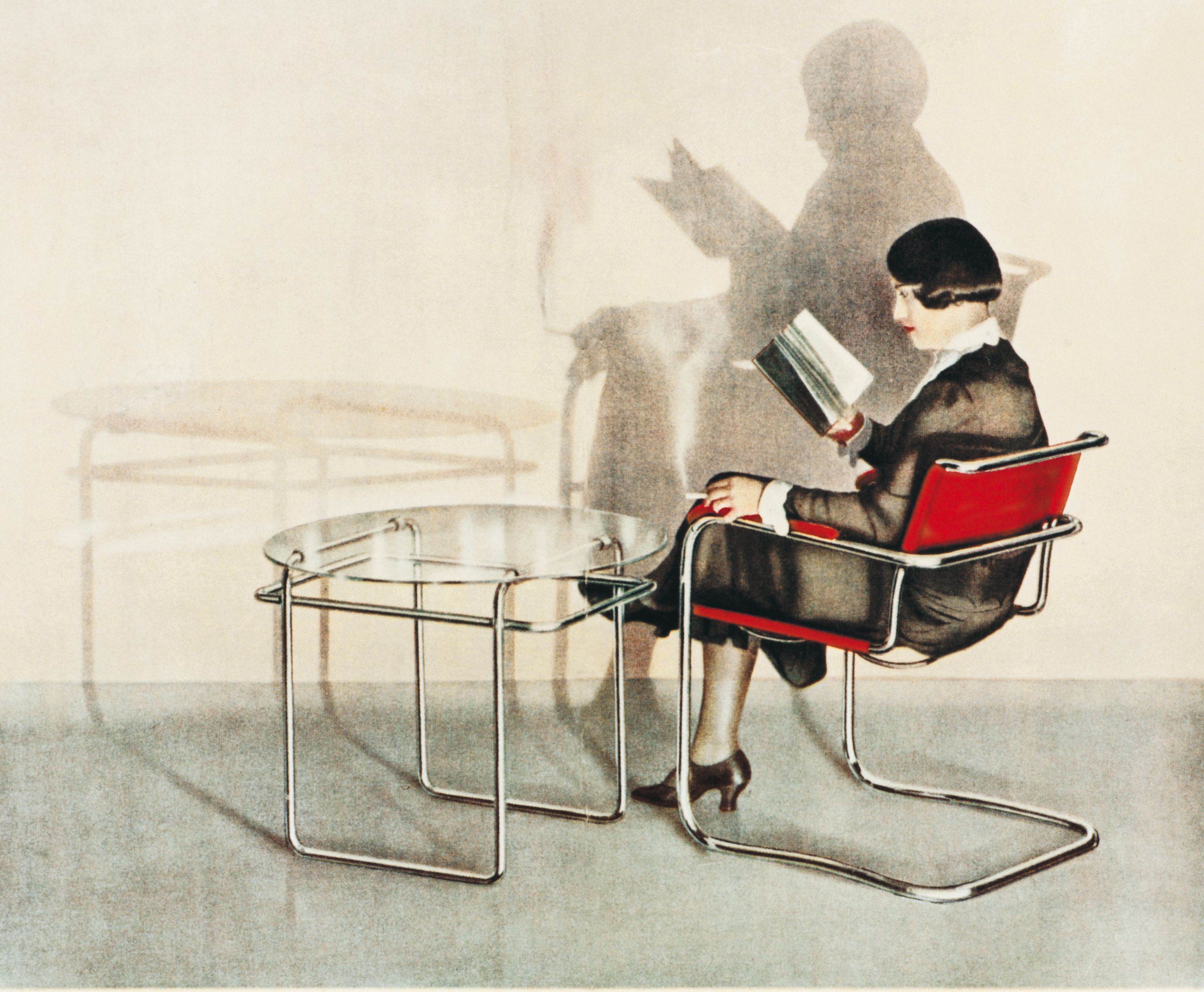
Thonet historical leaflet showing the tubular steel designs
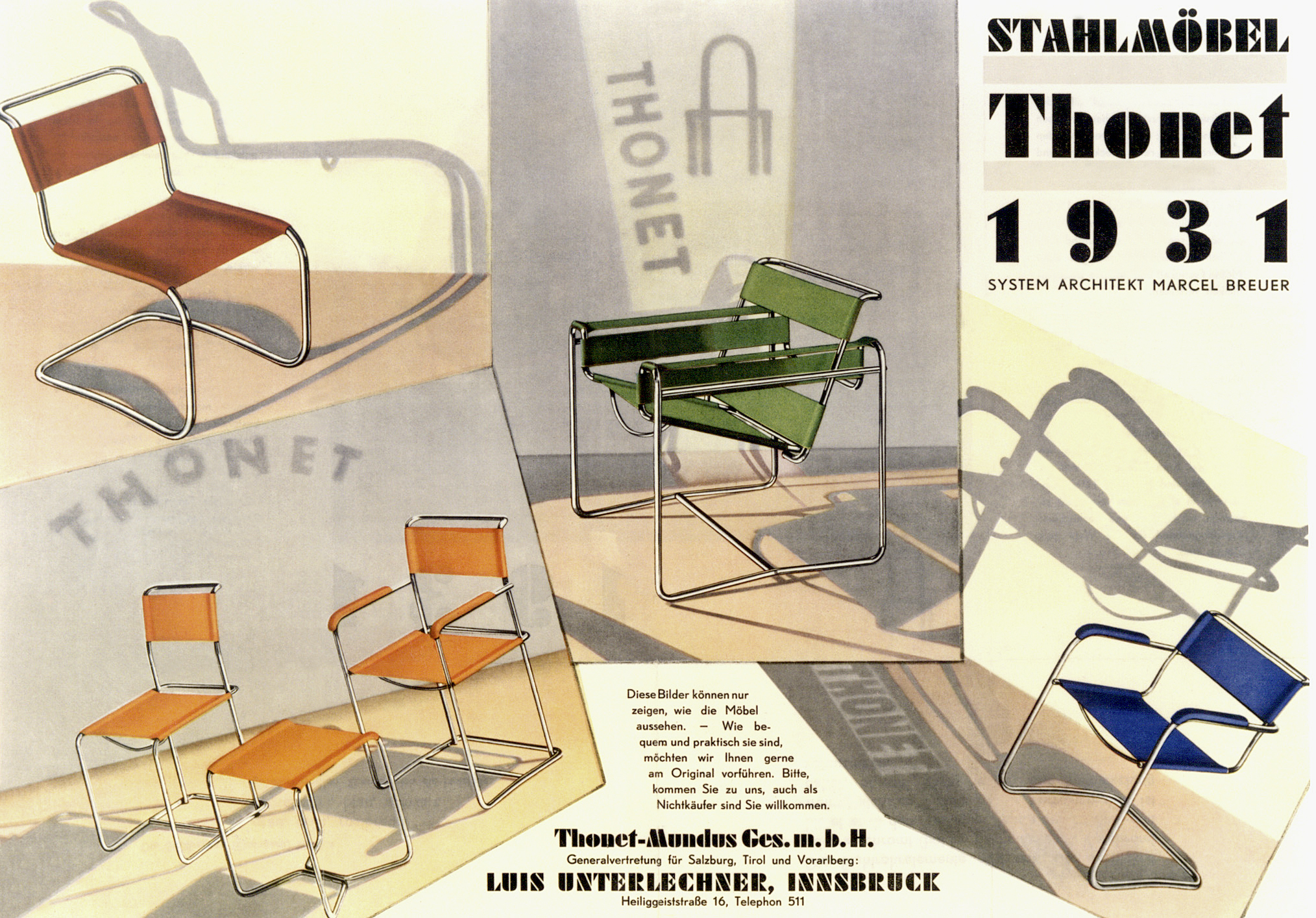
Thonet historical leaflet showing the tubular steel designs

Thonet designs featured in the Bauhaus Club in Dessau
INFORMATION
For more information, visit the Thonet website and the Studio Besau Marguerre website
Receive our daily digest of inspiration, escapism and design stories from around the world direct to your inbox.
Harriet Thorpe is a writer, journalist and editor covering architecture, design and culture, with particular interest in sustainability, 20th-century architecture and community. After studying History of Art at the School of Oriental and African Studies (SOAS) and Journalism at City University in London, she developed her interest in architecture working at Wallpaper* magazine and today contributes to Wallpaper*, The World of Interiors and Icon magazine, amongst other titles. She is author of The Sustainable City (2022, Hoxton Mini Press), a book about sustainable architecture in London, and the Modern Cambridge Map (2023, Blue Crow Media), a map of 20th-century architecture in Cambridge, the city where she grew up.
-
 ‘I want to bring anxiety to the surface': Shannon Cartier Lucy on her unsettling works
‘I want to bring anxiety to the surface': Shannon Cartier Lucy on her unsettling worksIn an exhibition at Soft Opening, London, Shannon Cartier Lucy revisits childhood memories
-
 What one writer learnt in 2025 through exploring the ‘intimate, familiar’ wardrobes of ten friends
What one writer learnt in 2025 through exploring the ‘intimate, familiar’ wardrobes of ten friendsInspired by artist Sophie Calle, Colleen Kelsey’s ‘Wearing It Out’ sees the writer ask ten friends to tell the stories behind their most precious garments – from a wedding dress ordered on a whim to a pair of Prada Mary Janes
-
 Year in review: 2025’s top ten cars chosen by transport editor Jonathan Bell
Year in review: 2025’s top ten cars chosen by transport editor Jonathan BellWhat were our chosen conveyances in 2025? These ten cars impressed, either through their look and feel, style, sophistication or all-round practicality
-
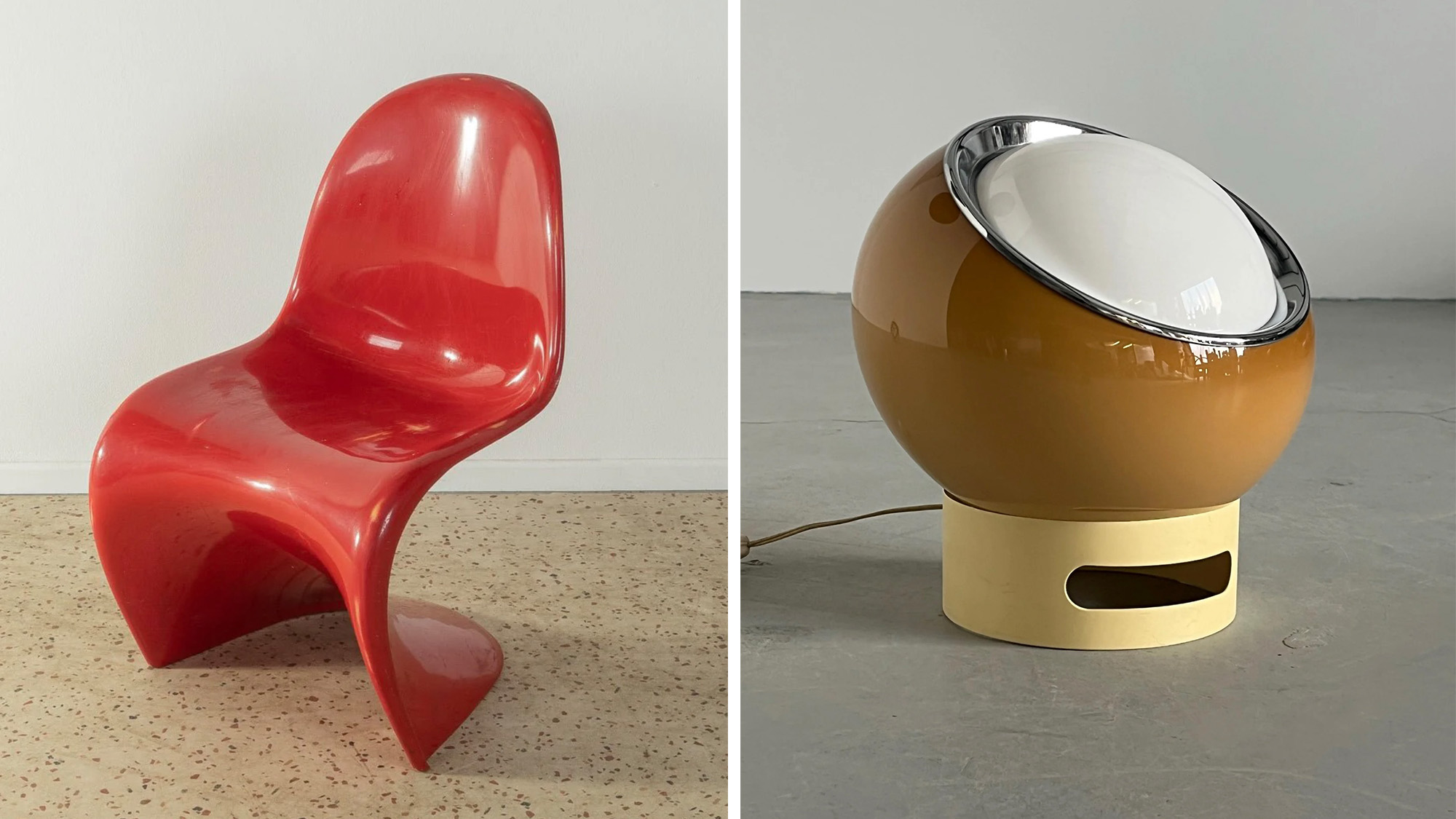 Where to buy second hand furniture online, according to Wallpaper* editors
Where to buy second hand furniture online, according to Wallpaper* editorsFuelled by a shift toward circular design and a rejection of fast furniture, these resale platforms prove that beautiful interiors start with something pre-loved
-
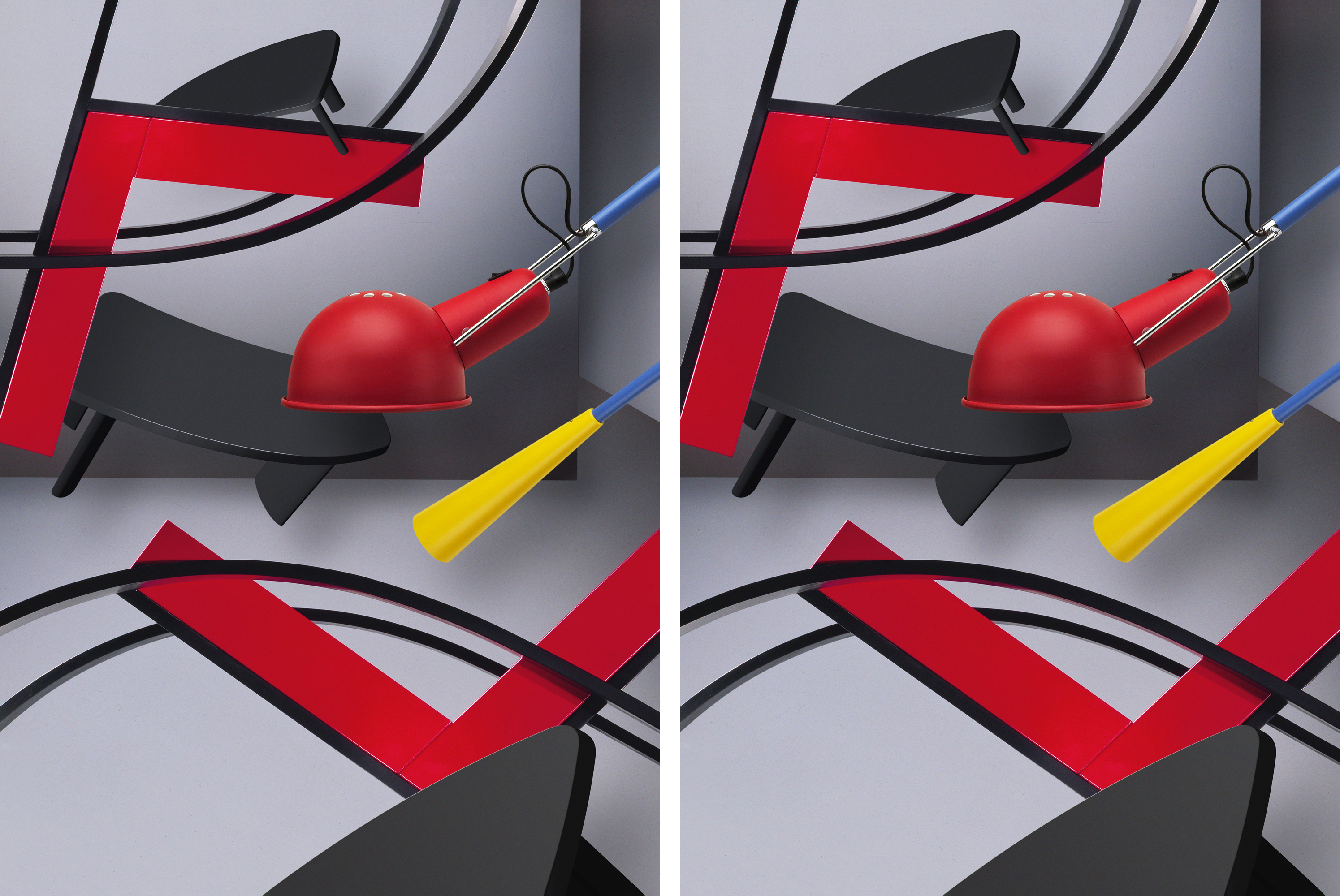 Best reissues: vintage design classics revitalised with brio
Best reissues: vintage design classics revitalised with brioExplore vintage design reimagined for the future
-
 Tobias Grau’s illuminating solution to home workspace lighting
Tobias Grau’s illuminating solution to home workspace lightingThe German lighting experts launch ‘Team’, a new system featuring innovative technology and a minimal, human-centred design by creative directors Timon and Melchior Grau
-
 Reissued Bauhaus chair by Barber & Osgerby adds to a long line of Isokon hits
Reissued Bauhaus chair by Barber & Osgerby adds to a long line of Isokon hitsAnchored by the Bauhaus ideaology, Isokon Plus reissue the ‘Shell’ birch plywood chair by Barber & Osgerby
-
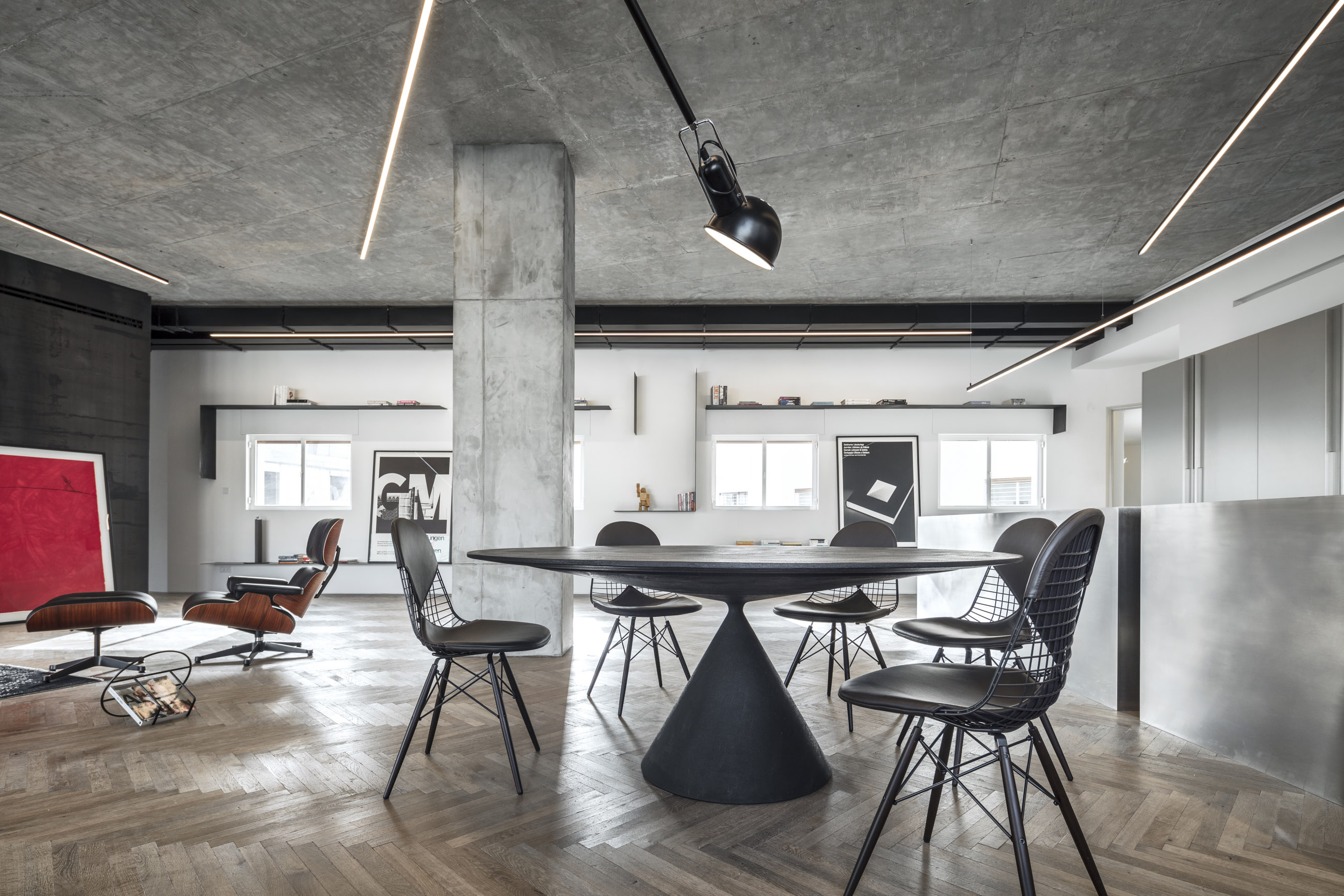 Axelrod renovates a Bauhaus-style loft in Tel Aviv
Axelrod renovates a Bauhaus-style loft in Tel Aviv -
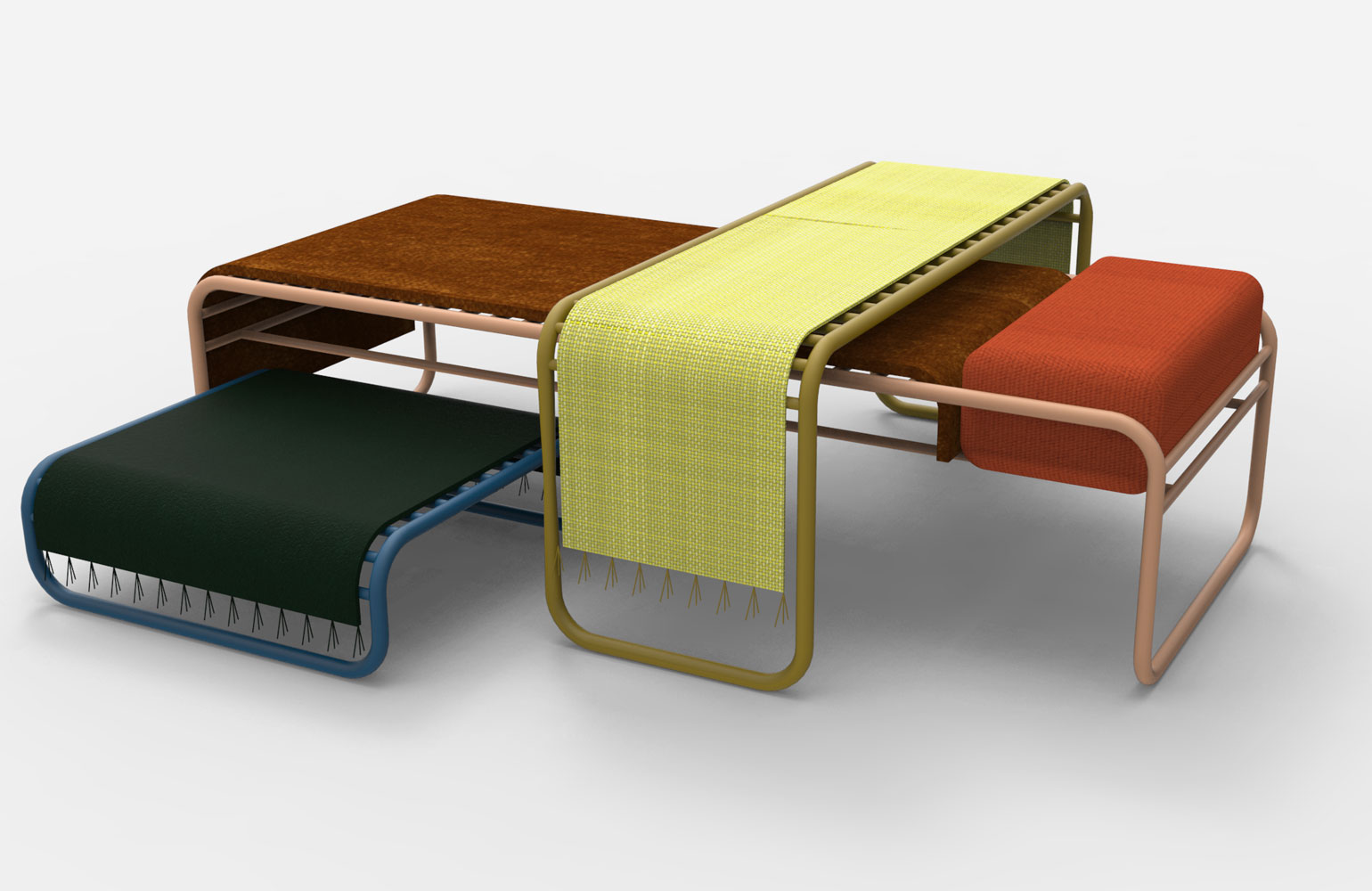 Hit list: 5 launches at IMM Cologne to look out for
Hit list: 5 launches at IMM Cologne to look out forKicking off the calendar year of monumental design fairs is IMM Cologne (15-21 January). The German city’s annual event is entering its 69th year, with a host of product releases and inspiring installations from a roster of global players. From ethereal Australian lighting to Danish woven modular benches, here are the new launches we are most looking forward to...
-
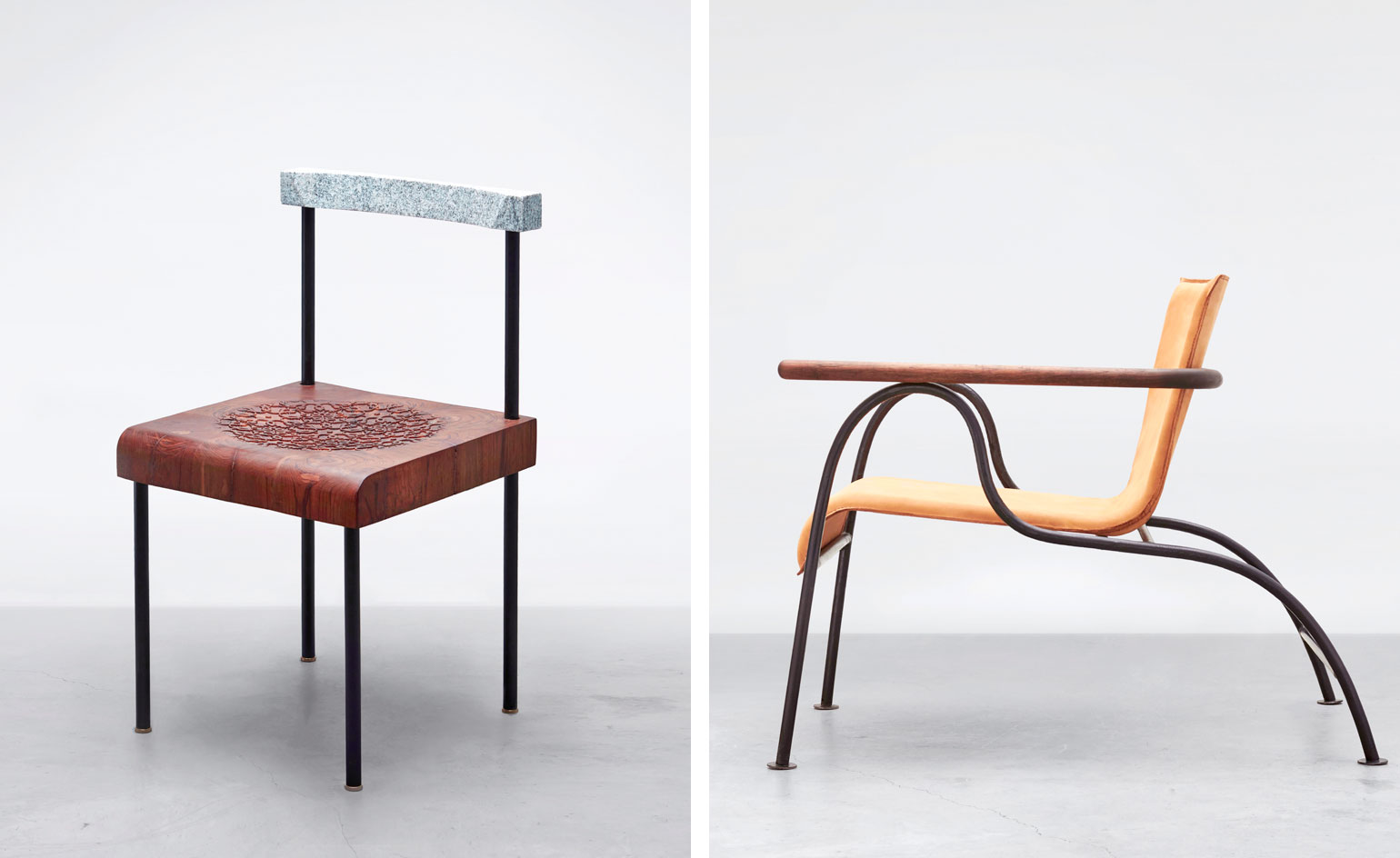 Indian tradition marries German rigour in a new cross cultural furniture collection
Indian tradition marries German rigour in a new cross cultural furniture collection -
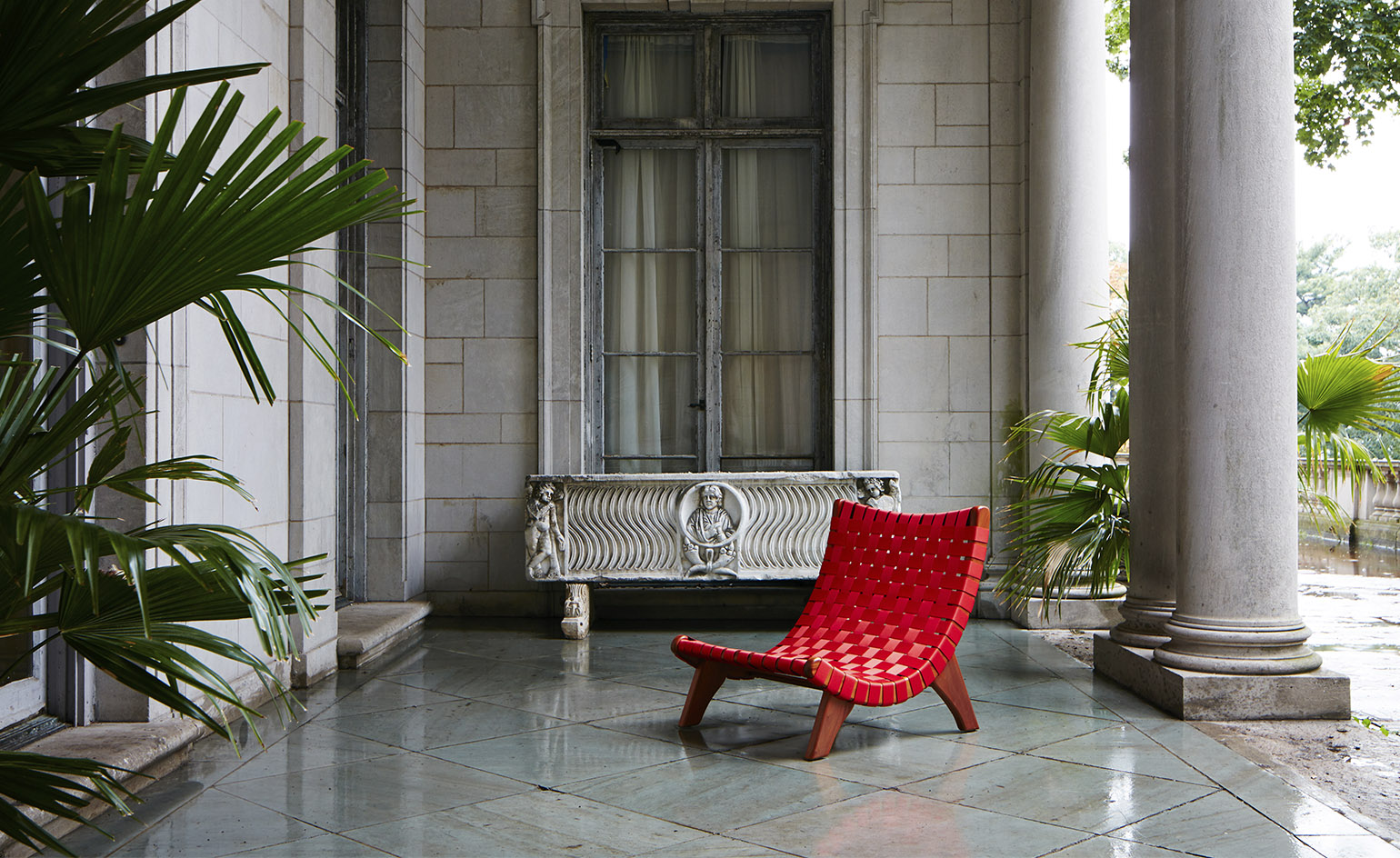 Luteca revives the furniture designs of Mexican modernist Michael van Beuren
Luteca revives the furniture designs of Mexican modernist Michael van Beuren